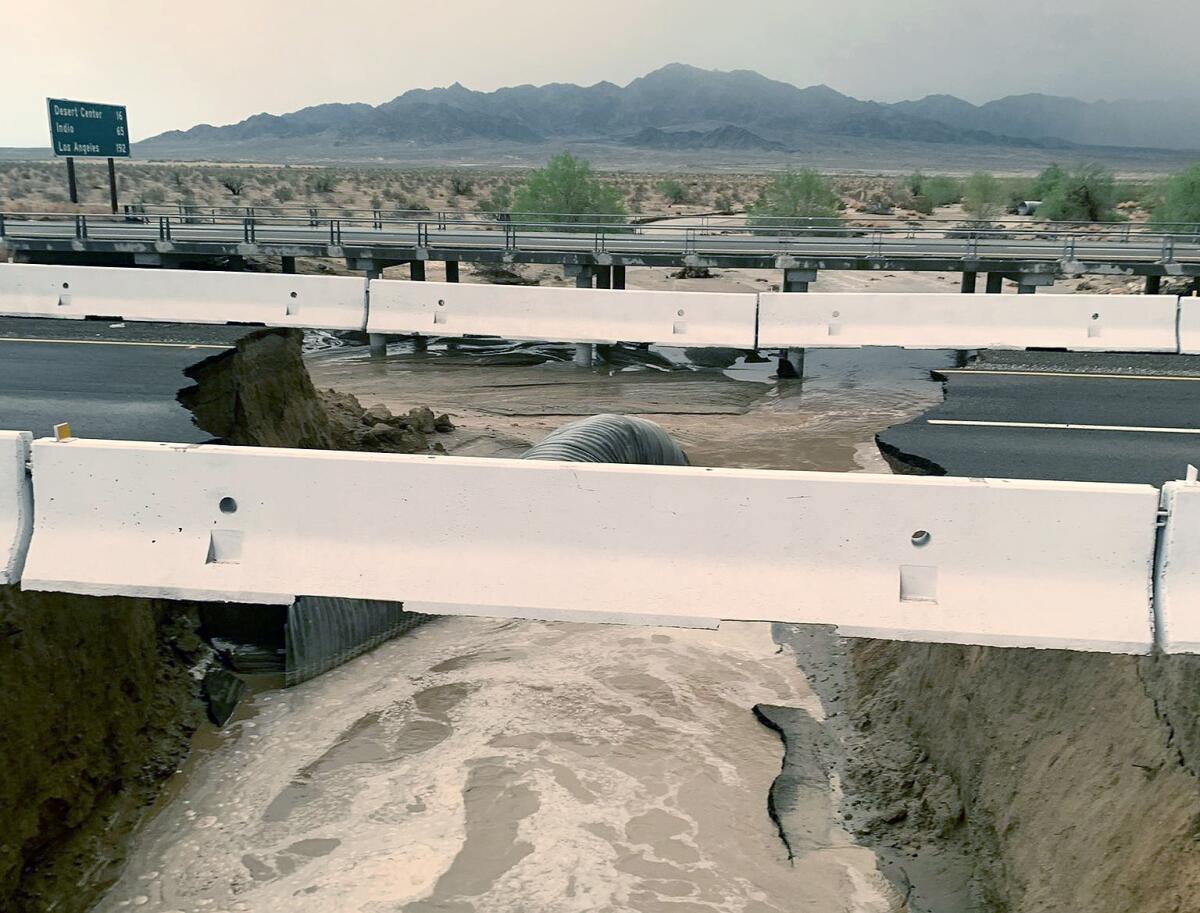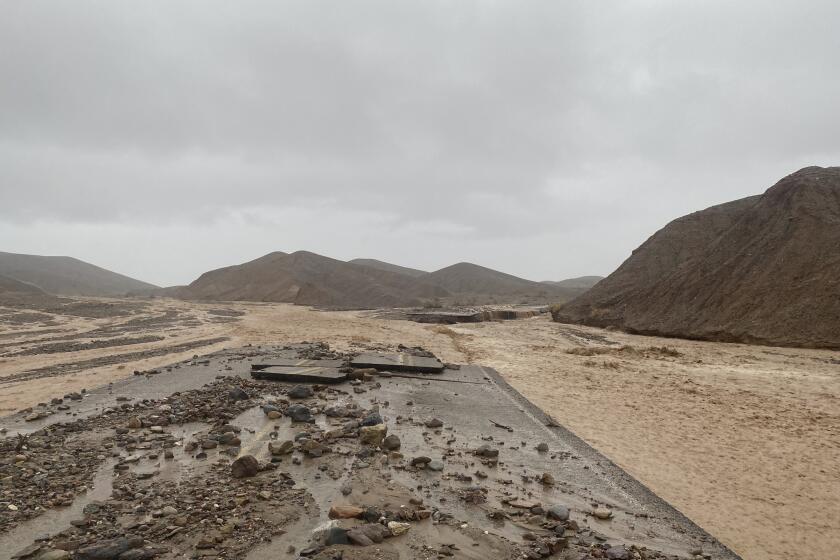Flash flooding washes out part of Interstate 10 in Riverside County as wild weather continues

- Share via
One eastbound lane on Interstate 10 reopened Thursday morning following flash flooding from intense storms from the night before that washed out part of the freeway near the California-Arizona border.
The damaged road near Desert Center was a detour lane created because of ongoing construction, said Emily Lenien, a spokesperson for the California Department of Transportation. Images posted on Twitter showed a portion of the road had been washed away.
The eastbound lane that opened Thursday morning was one of the regular I-10 lanes that was part of the construction, Lenien said. Commuters were still warned to expect delays.
Caltrans advised commuters traveling to Blythe or to Arizona to use Highway 86 or Highway 111 down to Highway 8 from the 10 or to use Highway 15 to Highway 40 into Needles.
As experts warn of more monsoonal rains later this week, California national parks are still struggling with the flood’s aftermath.
Both directions of Highway 62 from Godwin Road to Route 95/Vidal Junction and Highway 177 from Route 10 to Route 62/Twentynine Palms Highway remained shut Thursday morning due to debris, mud and some downed power lines on the roads, Lenien said. Both highways were expected to open by 9 a.m.
It was unclear whether Highway 78, parts of which were also affected, had reopened Thursday morning.
Floodwater had closed the eastbound freeway on Wednesday night at mile marker 121, about 16 miles east of Desert Center, said Sharon Leath, a California Highway Patrol dispatcher. Westbound lanes were temporarily closed but had reopened by 11:30 p.m.
Authorities had received reports of seven overturned tractor-trailers, with one person injured, on Wednesday night, Leath said. Leath did not know the extent of the person’s injuries.
The flash floods follow events earlier this month, when heavy rainfall caused flash flooding in the state’s mountains and deserts, including Death Valley National Park. Officials were was forced to close all roads into Death Valley on Aug. 5 after a historic rainfall and flash flooding wreaked havoc on the park, damaging 60 vehicles and trapping about 500 visitors and another 500 staff members.
Parts of the park did not open again until two weeks later.
Tom Frieders, a warning coordination meteorologist for the National Weather Service in Phoenix, said that Arizona and southeastern California are in monsoon season, which usually runs from July through September. As the monsoon patterns develop across the area, the threat for thunderstorms increases, Frieders said. So does the potential for quick bursts of rain.
“That’s the thing we’re susceptible to out here in the Southwest is these extreme rainfall rates that lead to life-threatening flash flooding,” Frieders said. Flash floods are typically produced when there is about one to two inches of rainfall in an hour or less.
The soil conditions in the southwest United States increase the risk of flash floods because the ground cannot absorb the heavy rainfall quickly enough, Frieders said. Dry washes can also rapidly transform into raging rivers several feet deep, posing a particular threat for those traveling in rural areas. In some cases, roads could be washed away entirely.
Most fatalities in flash floods occur in cars as people attempt to drive through flooded conditions, he said.
More to Read
Sign up for Essential California
The most important California stories and recommendations in your inbox every morning.
You may occasionally receive promotional content from the Los Angeles Times.













